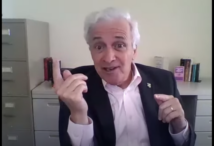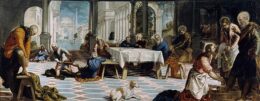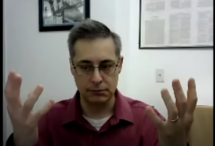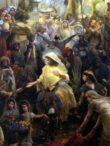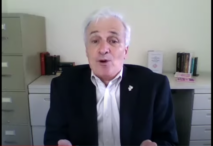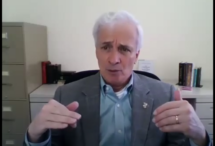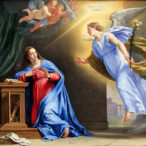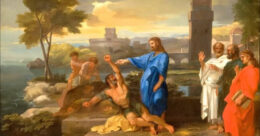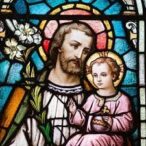In this episode, you’ll learn: -How the Church uses the solar and lunar calendars -Special devotions and customs for your family to practice at home during Eastertide -Which mysteries of the Rosary are proper to each day and each season -Whether you should abstain from meat on a Friday in the octave of Easter -Whether the Easter Vigil (pre-1955 and post-1955) satisfies your Easter Sunday obligation And of course, much more! Join us.
Author: David Cassman
HOLY THURSDAY MASS OF THE LAST SUPPER: Grace Notes: Why we sing what we sing
The music this day is remarkable for a number of reasons. This is not a Sunday, so there is no Asperges. And since there is no Asperges, we sing the Introit (Nos autem) as the processional. Of course, since we are in Passiontide, we omit the Gloria Patri.
The priest is not wearing violet. Rather, he is wearing white, and so you might imagine that Mass XVII is probably not to be used and that is correct. The rubrics suggest that Mass IV be used and indeed is what we sing.
Holy Thursday is special because, even though it falls in Holy Week, it is a time of rejoicing since it commemorates the institution of the Mass, Holy Orders and the Blessed Sacrament of the Eucharist. In keeping with the somber side of things, the Kyrie is unaccompanied, but on the other hand, the Gloria is accompanied by the organ – the last time we will hear it until the Gloria at the Mass of the Paschal Vigil. The Gloria is also accompanied by a glorious ringing of the bells, but they too will disappear until the Gloria at the Mass of the Paschal Vigil. In place of the bells, you will hear the knocking of the clacker.
The Gradual (Christus factus est) is a recurring theme throughout Holy Week, and in particular, at Tenebrae. Given the dual nature of the feast, what follows the Gradual? Certainly not an Alleluia! Not during Lent, and certainly not during Holy Week. A Tract? Not on such a day of rejoicing! So, what follows the Gradual? Nothing! And that is a rarity indeed! We proceed directly from the Gradual to the Gospel.
There is no Credo because, even though it is a time of rejoicing, the day itself is a Feria, and the Credo is not said on days of Feria.
During the Washing of the Feet, the Schola sings a number of antiphons. We keep a close eye on the proceedings because as Father approaches the last of the Apostles, we start immediately with the Ubi Caritas, which is mandatory.
The Gloria Patri is omitted at the Lavabo. At the Offertory, we once again sing Stella Coeli Extirpavit. The Preface is that of The Holy Cross.
The character of the Mass has changed, and has now become more somber. This is very apparent as we sing the Agnus Dei. We repeat the phrase miserere nobis three times and do not sing dona nobis pacem.
The second Confiteor is omitted. At the Communion, the choir sings a polyphonic setting of the Gradual, Christus Factus Est. A very full church gave us time to also sing Adoro te Devote, in honor of the institution of the Eucharist.
Instead of the Ite Missa est, Father sings Benedicamus Domino. There is no Last Blessing and no Last Gospel. As soon as Mass is ended, the Blessed Sacrament is translated in procession to the Altar of Repose. We sing the Pange Lingua in procession, repeating verses 2 through 4 until we arrive at the Altar of Repose, at which time we sing verses 5 and 6, Tantum ergo. The procession returns to the Church for the Stripping of the Altar during which the Schola solemnly chants the now familiar Psalm 21 – Deus, Deus meus.
Louis Tofari and 1955 Holy Week Reform (Part 2); WtT-Ep 10
This is part two of my interview with Louis Tofari about the changes to the Holy Week liturgy in 1955. Part one was surprisingly controversial with some members of the audience. In today’s episode, you’ll learn: -The false accusations by some trads against holy popes Pius X and Pius XII -Who was Bugnini and was he involved in the 1955 reforms? -The evidence that Bugnini was ‘turned’ by the Masons in 1963 -Itemization of how Holy Week reform is actually an improvement from the pre-55 -What ‘active participation’ really means And of course, much more in this hour-long conversation with Louis Tofari of Romanitas Press
Louis Tofari and 1955 Holy Week Reform (Part 1); WtT-Ep 9
This is part one of a two-part interview of Louis Tofari on the liturgy of Holy Week and the changes that were made under Pius XII in 1955. Here are a few of the things you’ll learn in this episode: -What is the Pope’s authority over liturgy? -Did reform of the liturgy start/stop at Trent? -What makes a liturgy ‘Roman’ -The surprising (sedevacantist) origins of opposition to the 1955 reforms -How many pre-55ers actually advocate for modernist-style approaches to liturgy and obedience -The neo-antiquarianism of many who oppose the 1955 reforms -How do we distinguish between pre-conciliar and post-conciliar liturgical changs? -What’s our standard for authentic obedience of the faithful? -Significant differences between Eastern and Western liturgies. Some relevant links: https://www.romanitaspress.com/liturg… https://sspx.org/en/only-when-faith-q… https://www.vatican.va/content/pius-x…
PALM SUNDAY: Grace Notes: Why we sing what we sing
We are well into Passiontide, and we now enter into the most solemn time of the year, Holy Week. The music speaks to this solemnity as only music can and as only the human voice can. The initial theme today is the Kingship of Christ, as He is exalted by the children of the Hebrews in Jerusalem. Soon after, the people of the Holy City will have Him crucified. The Gloria Patri is not sung during Passiontide, but an exception is made during the distribution of palms because this is a glorious time.
The hymns we sang on procession honor Christ, as King. The procession stops outside the door of the church. Some of the men of the Schola are behind the closed door of the church and sing the refrain, Gloria Laus:
All glory, praise, and honor to Thee, Redeemer, King, to whom the lips of children made sweet Hosannas ring.
The Church represents Jerusalem, and Jerusalem represents heaven. The procession may not enter. The Schola sings verses from inside, and the congregation responds with the refrain. When the refrain is being sung for the last time, the Crucifer (cross bearer) taps the door with the foot of the Cross. The gate can now be opened! The procession joyfully enters the church as the Schola sings the Ingrediente:
As the Lord entered the holy city, the children of the Hebrews proclaimed the resurrection of life. Waving their branches of palm, they cried: Hosanna in the highest.
All the joy is short-lived, however. There is no processional hymn. There is no Asperges, as we move immediately from one liturgical function (the procession) to the next (the Mass). There are no prayers at the foot of the altar. The Mass moves very quickly from the Introit to the Gradual, and then immediately to the Tract – one of the longest pieces of the year. It is taken from Psalm 21, which you will hear again on both Holy Thursday and Good Friday. Note, as well, that all of the other propers of Palm Sunday also come from Psalm 21.
The Tract is suitable preparation for what happens next – one of the most extraordinary elements of the Liturgy, the solemn chanting of the Passion. The Passion is unique in that it is the only Gospel that makes use of three voices: The narrator (Chronista); the rabble, and everyone else, including Peter and Pilate (Synagoga); and Our Lord (Christus). The Chronista sings in a normally pitched voice. The Synagoga sings in a horrible and shrill tone, almost a shriek. The Christus (always a priest or deacon) sings in a lower register in a beautiful tone that exudes peace. The Passion concludes with the Chronsita finishing his account in doleful and exquisitely beautiful tones that evoke the great sorrow we feel at the death of Our Lord.
After the longish Offertory antiphon, the Schola sang Stella Coeli Extirpavit.
At the Communion, the choir sang O Vos Omnes, by Tomás Luis da Victoria. The text comes from the Lamentations of Jeremiah which puts these words in the mouth of Our Lord:
O all you who walk by on the road, pay attention and see: if there be any sorrow like my sorrow.
Pay attention, all people, and look at my sorrow: if there be any sorrow like my sorrow.
We then sang a few verses of the Passiontide hymn, Vexilla Regis.
There was no Last Gospel. As this is the second Sunday of the month, we sang the Anthem of the Holy Name Society as the recessional.
Welcome to Tradition – Episode 08
In this episode you’ll learn: -The proper posture at the ringing of the ‘Sanctus’ bells -What to do when everyone else does the wrong thing at Mass -What to do with your hands when you’re kneeling at the communion rail And much more! Like, subscribe and don’t forget to share with your friends!
Welcome to Tradition – Episode 07
In this episode, you’ll learn: -The surprising truth about concelebration in the TLM -The origin of pews in church (and why Catholic Churches in Europe don’t have them) -What to do when you get drenched with Holy Water at the Asperges -Why we stand at the Gospel And why you’ll see the priest taking off his maniple (and maybe even the chasuble) after the Credo. Join us!
THE FOURTH SUNDAY OF LENT (KNOWN AS LAETARE SUNDAY): Grace Notes: Why we sing what we sing
Laetare, Jerusalem! Rejoice, Jerusalem! So starts the Introit for Sunday’s Mass. This marks the halfway point during Lent, and so we are given a bit of a respite from Lent’s austerities. We still sing a Tract instead of the banished Alleluia. We again sing Mass XVII (with Credo I), but the priest is not wearing the typical shade of violet! What is that color? It is rose (never to be called pink), and it is supposed to be a lighter shade of violet. So, still violet, but distinctively different, so as to set this Sunday aside as a day of rejoicing in the heart of the penitential season. Flowers, which are banned from the altar during Lent, are permitted on this day. And the organ, which is likewise banned during Lent, is permitted on this day.
The feast of the Annunciation, which is a first-class feast, was on the previous Friday. Given that Laetare Sunday is likewise a first-class feast, it cannot be displaced and so it is not permitted to solemnize the feast of the Annunciation.
After singing Stella Coeli Extirpavit at the Offertory, we honored Our Lady in her Annunciation by singing the simple Gregorian Ave Maria.
This Sunday is also known as Mothering Sunday. This is owing to the Epistle, in which we are called sons of Mother Jerusalem and of the Free Woman. In Christian Europe, on this day, the faithful would visit the Mother Church in their diocese, that is, the Cathedral. And this was Mother’s Day. It still is in several countries.
After honoring Our Lord in the Blessed Sacrament by singing Ave Verum Corpus, we honored Our Lady in her motherhood by singing Salve Mater.
To conclude the Mass, again in honor of the Annunciation, we sang the complete Angelus at the recessional.
THIRD SUNDAY OF LENT: Grace Notes: Why we sing what we sing
With an interesting difference, this was a typical Sunday of Lent. The priest was again wearing violet, and of course, we sang Mass XVII, which is only used during Advent and Lent. With that, we sang Credo I. Because it is Lent, the Mass calls for a Tract rather than an Alleluia.
We sang Blessed Lamb at the processional. This is a thoroughly Lenten piece that speaks to Our Lord’s saving Blood.
At the Offertory, again, we sang Stella Coeli Extirpavit.
We moved our Holy Name observances to this Sunday and included a formal ceremony for the installation of the newly elected Officers. Thus, at the Communion, we sang Jesu Dulcis Memoria.
The installation ceremony began immediately after the Last Gospel with the hymn Veni, Creator Spiritus. After the installation of the Officers, we recited the Holy Name Pledge, then sang the Holy Name Anthem as a recessional.
Sometimes it’s just as interesting to know why we did not sing something as why we did. We did not sing a hymn in honor of Saint Joseph because the only fitting one in our hymnal – Hail, Holy Joseph, Hail– was used in our festivities after Mass in honor of Saint Joseph
FEAST OF SAINT JOSEPH: Grace Notes Special Edition: Why we sing what we sing
We were fortunate to be able to have a sung Mass (Missa Cantata) for the Feast of Saint Joseph. Given that this was not a Sunday, there was no Asperges. And given that there was no Asperges, we sang the Introit as the processional.
Though it is Lent, due to the nature of the Feast, Father was wearing white, and we sang Mass VIII instead of the typical Mass for Lent, Mass XVII. It is still Lent, however, and so we sang the Tract instead of the Alleluia.
Even though it is Lent, the Gloria is called for. Because it is a first-class feast, the Credo is called for. We sang Credo III, which goes nicely with Mass VIII.
At the Offertory, again, we sang Stella Coeli Extirpavit.
At the Communion, we sang Parce Domine, and for the Recessional, Hail, Holy Joseph, Hail.
